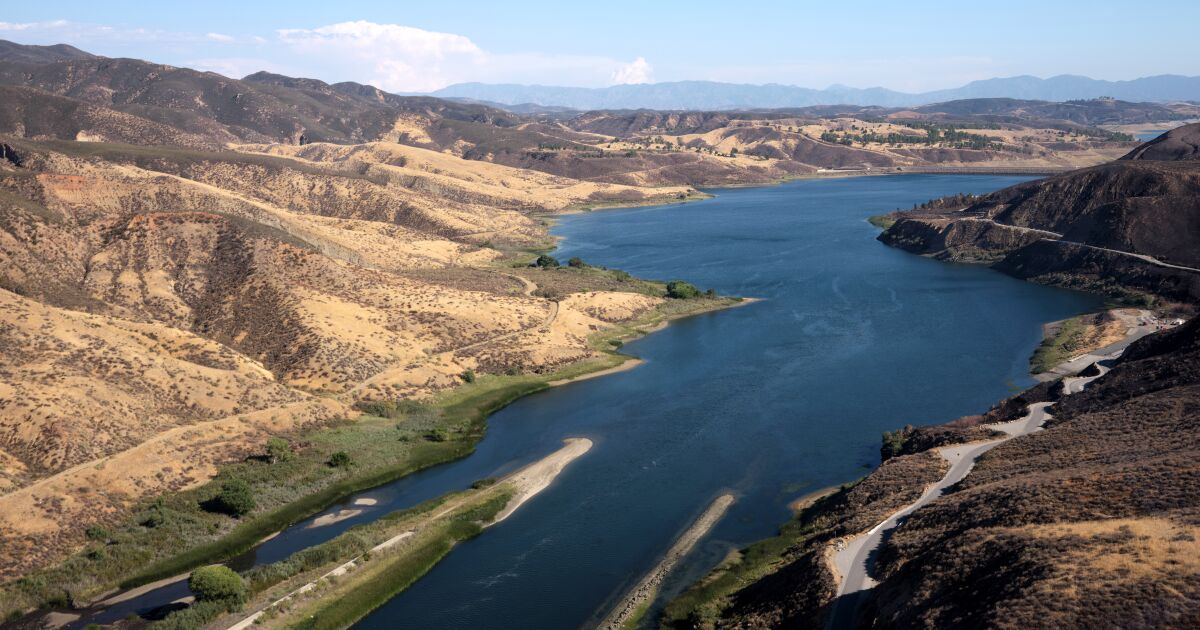OfTheCross
Veteran

Los Angeles is running out of water, and time. Are leaders willing to act?
L.A. has invested significantly in its water future, but many projects remain unfinished. We asked Karen Bass and Rick Caruso their plans.
By now, it is clear that water independence is the best path forward for the 4 million residents of the city of Los Angeles, and for the county and region as a whole. Imported supplies from the State Water Project are heavily dependent on annual snowpack and rainfall in the Sierra, which are no longer a guarantee under the state’s shifting climate regime. What’s more, long-reliable federal supplies from the Colorado River are rapidly drying up, with the river’s largest reservoir, Lake Mead, nearing dangerously low levels.
In certain ways, the city is in better shape than some other major metropolitan areas because of the Los Angeles Aqueduct system, two pipelines that deliver water from the Mono Basin and Owens River hundreds of miles away. But even that supply — much of it secured by stealth and deception more than 100 years ago — is heavily reliant on Sierra snowmelt.
“The reality is most Angelenos, most people, haven’t thought about water their entire lives because it’s been reliable,” said Evelyn Cortez-Davis, director of water engineering and technical services at the DWP. But as the helicopter zoomed over the area’s drought-dried hills and heat-sapped reservoirs, the urgency of the work came clearly into focus.
Mayor Eric Garcetti surveys Los Angeles water infrastructure from a helicopter
Mayor Eric Garcetti, surveying L.A.'s water infrastructure from a helicopter, says he hopes his successor will see the city’s many water projects through to completion.(Hayley Smith / Los Angeles Times)
Garcetti said that neither of the two candidates seeking to replace him has reached out to discuss the city’s water goals. However, in emails to The Times, both Rep. Karen Bass and Rick Caruso said they believed Los Angeles must reduce its reliance on imported water.
Bass, who helped pass a major overhaul of the state’s water system in 2009, said her top water priority as mayor would be modernizing aging infrastructure. She also said she would focus on ensuring the quality of drinking water for the city’s residents, noting that communities of color are often hit hardest by environmental inequities.
“There’s no one solution — but by choosing a strategic balance, with investments in strategies like water conservation, landscape transformation, rainwater capture, groundwater recharge, and the protection of our imported supplies, we will ensure a more sustainable water future,” Bass wrote. She added that “there is more we can do to reduce our reliance on imported water, which begins with more aggressive conservation measures.”
Caruso, a former DWP commissioner, said the next few years are critical. He underscored the need for more efficient water use and said water recycling and groundwater recharge would be his top priorities.
“Drought impacts all of us, and we must work collectively to reduce our water usage while working to quickly and efficiently expand our groundwater recharge and recycling efforts,” Caruso wrote. He said he would “work diligently to expand the use of recycled water for non-potable purposes and to ensure that all commercial and industrial users who want or need access to recycled water can achieve it easily — it won’t happen quickly, but we must prioritize it.”
Most experts agree that wastewater recycling — or the capture and treatment of water for reuse — is among the most important steps for achieving greater self-reliance in Los Angeles. Currently, recycled water makes up only about 2% of the city’s drinking water, but officials hope to one day see that amount at 35% or higher.
There are a few projects underway to help get there. For one, a direct potable reuse facility near the Headworks Reservoir, just north of Griffith Park, is expected to become the first facility in the state to put purified recycled water directly back into the drinking system, serving as proof of concept, officials said. It is slated to come online within the next five years.
The DWP also aims to recycle 100% of its available wastewater from the Donald C. Tillman water reclamation plant in Van Nuys, which will be used to replenish the San Fernando groundwater basin and will produce enough drinking water for more than 200,000 people each year. That project is slated for completion by 2027.
But perhaps most ambitious is the conversion of the massive Hyperion Water Reclamation Plant in Playa del Rey into an advanced water purification facility by 2035. The plant currently treats wastewater only enough to release it back into Santa Monica Bay, but when the work is completed, it will produce enough water for 2 million people.
“It will dwarf everything else,” Garcetti said of the project.




